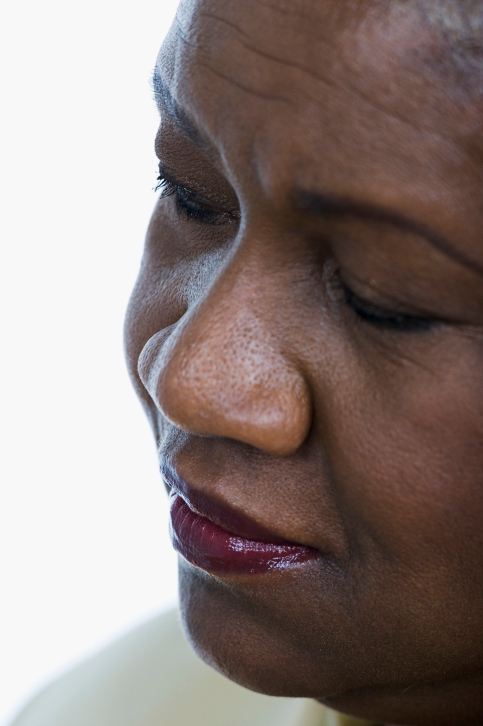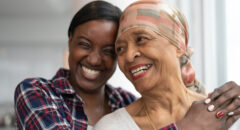 According to the Centers for Disease Control and Prevention (CDC), there are 4.9 million African Americans living in the United States with diabetes. These individuals typically will be categorized as having one of three common types; type 1, type 2, or gestational. In adults, type 1 diabetes accounts for approximately 5% of all diagnoses; type 2 represents about 90% to 95% of all cases, with reported rates of gestational diabetes ranging from 2% to 10% of pregnancies. Most African Americans will be diagnosed with type 2 diabetes.
According to the Centers for Disease Control and Prevention (CDC), there are 4.9 million African Americans living in the United States with diabetes. These individuals typically will be categorized as having one of three common types; type 1, type 2, or gestational. In adults, type 1 diabetes accounts for approximately 5% of all diagnoses; type 2 represents about 90% to 95% of all cases, with reported rates of gestational diabetes ranging from 2% to 10% of pregnancies. Most African Americans will be diagnosed with type 2 diabetes.
MUST READ: The 8 People You Need On Your Diabetes Care Team
However, there are other types of diabetes— although uncommon, that you or a family member may be diagnosed with: Latent Autoimmune Diabetes in Adults, Maturity Onset Diabetes in the Young, Cystic Fibrosis Related Diabetes, and Antiretroviral-associated diabetes. These types of diabetes account for 1% to 5% of all diagnosed cases.
Latent Autoimmune Diabetes in Adults (LADA) shares characteristics of both type 1 and type 2 diabetes. Type 1 diabetes is an autoimmune disease—your immune system mistakenly attacks and destroys the beta cells in the pancreas where insulin is made. It’s not clear why this happens, but when it does, your body isn’t able to make enough of its own insulin to keep your blood glucose levels normal. Type 1 diabetes develops over a relatively short period of time. Type 2 diabetes is caused by a combination of factors; either your body doesn’t make enough insulin, which is called insulin deficiency, or the cells in the muscles, liver, and fat do not use insulin properly, which is called insulin resistance. Type 2 diabetes develops gradually and can be subtle and remain undiagnosed for years.In LADA, as in type 1 diabetes, your body’s immune system destroys the beta cells. At the time of diagnosis, people with LADA may still produce their own insulin, but eventually most will need insulin shots or an insulin pump to control blood glucose levels.
MUST READ: Diabetes & The Surprising Power of Yogurt
Maturity Onset Diabetes in the Young (MODY) is an uncommon form of diabetes that accounts for 1% to 5% of all cases in young people. MODY is caused by a genetic disorder of the beta cell which limits the ability of your pancreas to produce insulin. MODY can also be confused with type 1 or type 2 diabetes. Typically, the disease first occurs during adolescence or early adulthood. However, it can remain undiagnosed until later in life.
Cystic fibrosis can damage the pancreas enough to cause diabetes. People with Cystic Fibrosis Related Diabetes (CFRD) show signs of type 1 and type 2 diabetes. Due to the chronic inflammation associated with cystic fibrosis, the pancreas is unable to produce enough insulin— which typically is associated with type 1 diabetes. And as a result of chronic lung infections, CFRD people develop severe insulin resistance, which is associated with type 2 diabetes.
Diabetes resulting from antiretroviral therapy used for the treatment of human immunodeficiency virus (HIV) is referred to as antiretroviral associated diabetes. Insulin resistance, high blood glucose, and diabetes, have been associated with highly active antiretroviral therapy (HAART) used to treat HIV. HAART is based on the use of a drugs called protease inhibitors (PIs), which have been used extensively as antiretroviral agents. PIs are thought to cause diabetes by decreasing beta cell function, resulting in decreased insulin production.
Diabetes can be a difficult disease to understand. You can’t see it or feel it, and as you just discovered there are different types of diabetes. But all types of diabetes require similar care—eating well, exercising regularly, taking insulin or oral medications if they’re prescribed and working closely with your healthcare provider.
 Constance Brown-Riggs, MSEd, RD, CDE, CDN, is an award winning registered dietitian, certified diabetes educator, and past spokesperson for the Academy of Nutrition and Dietetics. She is the author of The African American Guide To Living Well With Diabetes and Eating Soulfully and Healthfully with Diabetes. Learn more about her work at www.constancebrownriggs.com and follow her on Twitter@eatingsoulfully
Constance Brown-Riggs, MSEd, RD, CDE, CDN, is an award winning registered dietitian, certified diabetes educator, and past spokesperson for the Academy of Nutrition and Dietetics. She is the author of The African American Guide To Living Well With Diabetes and Eating Soulfully and Healthfully with Diabetes. Learn more about her work at www.constancebrownriggs.com and follow her on Twitter@eatingsoulfully









